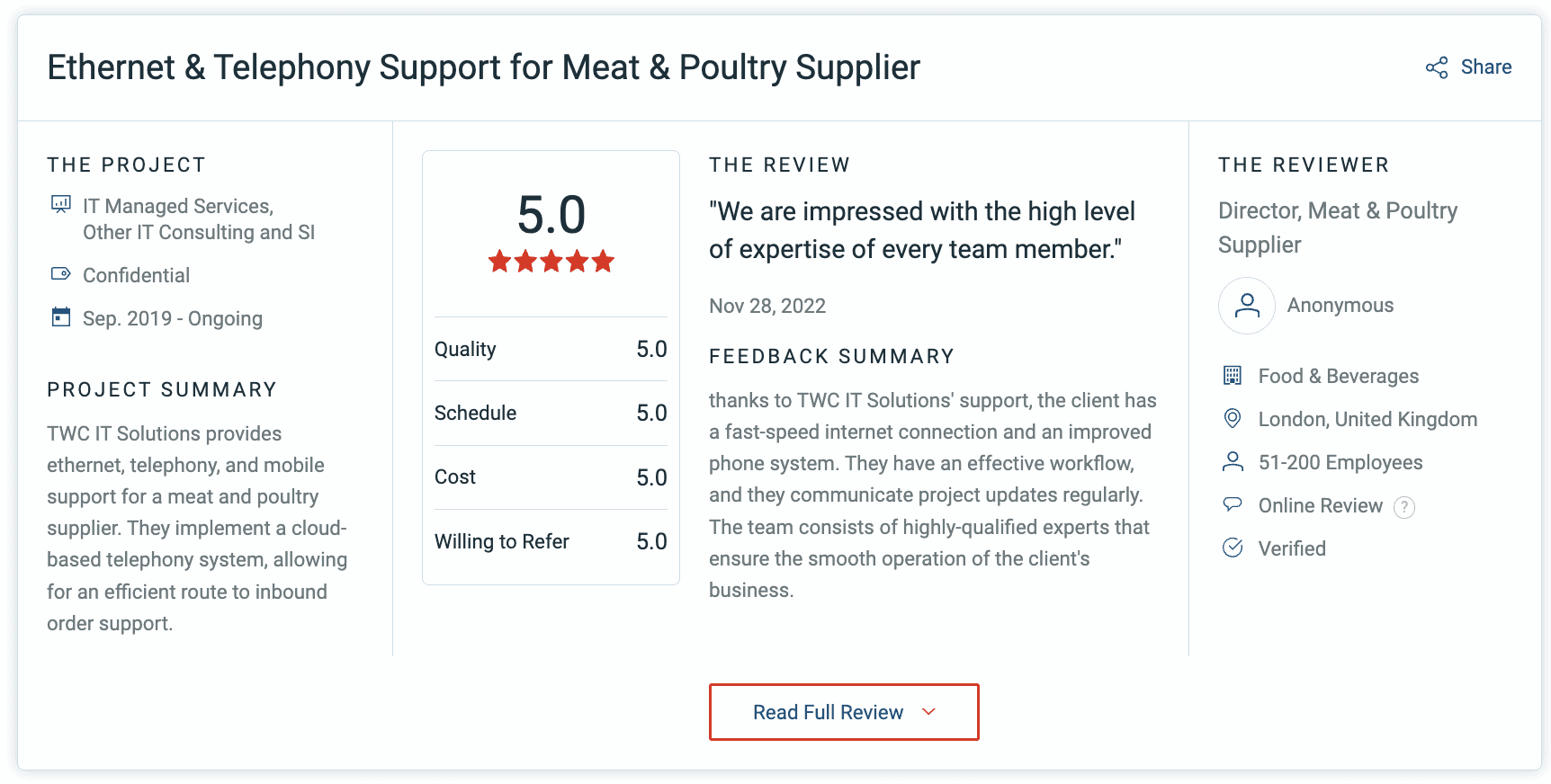In the dynamic realm of UK business, the choice between Leased Line vs Broadband for internet connectivity holds immense significance, shaping efficiency, scalability, and growth. Amidst technological advancements and escalating UK business demands, the responsibility rests on business owners to select a connectivity solution seamlessly aligned with their goals.
In a fiercely competitive business arena with high customer expectations, informed choices are pivotal. As companies strive for industry excellence, connectivity becomes foundational. This blog post empowers UK business owners with insights to discern Leased Line and Broadband differences. Our goal is clear: to enable you to choose wisely, propelling growth and innovation toward success.
LEASED LINE VS BROADBAND: KEY TECHNOLOGICAL DIFFERENCES
| Comparison Element | Leased Lines | Broadband |
|---|---|---|
| Maximum Speeds | Remarkable speeds up to 10Gbps | Standard speeds, lower than leased lines |
| Symmetrical Speeds | Perfectly balanced speeds for seamless data interchange | Often asymmetrical speeds, affecting performance |
| Dedicated Connection | Consistent and dependable performance through dedicated connections | Shared connections, potential slowdowns during peak usage |
| Lower Latency & Jitter | Lower latency and reduced jitter, important for video conferencing and trading | Potential higher latency, disrupting time-sensitive processes |
| Scalability | Flexible scalability to match evolving business needs | Struggles to scale due to finite bandwidth constraints |
| Reliability | Assured fixes and robust SLAs, minimal downtime | Fluctuating reliability without the same level of support |
| Static IP Addresses | Unlimited static IP addresses for streamlined operations | Limited options for static IP addresses |
| Installation Lead Time | Longer setup for tailored and dependable connections | Quicker installation but potential compromise on performance |
| Traffic Prioritisation | Customisable traffic prioritisation for consistent performance | Limited customisation options, potential data flow inefficiencies |
| Lower Latency | Significant for video calls and trading, ensures smoother experiences | Potential higher latency, influencing application quality |
▶ Symmetrical Speeds: Leased lines offer perfectly balanced speeds that facilitate seamless data interchange—an imperative factor for various business tasks. Conversely, broadband connections often lean towards asymmetrical speeds, thereby introducing a noteworthy divergence in performance.
▶ Dedicated Connection: The difference between leased line and broadband extends to the nature of dedicated connections. Leased lines deliver the assurance of consistent and dependable performance through their dedicated connections, a stark contrast to the shared nature of broadband connections, which can lead to potential slowdowns during peak usage periods. This underscores the direct impact of dedicated connections on overall performance.
▶ Lower Latency & Jitter: The superiority of leased lines becomes evident with their lower latency and reduced jitter—both pivotal for tasks such as video conferencing and trading. In contrast, broadband connections might exhibit higher latency, potentially disrupting time-sensitive processes.
▶ Scalability: The concept of scalability introduces yet another avenue for comparison between leased line and broadband. Leased lines offer the flexibility to scale according to evolving business needs, showcasing a capability that broadband struggles to match due to its finite bandwidth constraints. This disparity lays bare the varying degrees of expansion potential associated with each option.
▶Reliability: Leased lines shine with the assurance of guaranteed fixes and robust Service Level Agreements (SLAs), leading to minimal downtime. In contrast, the reliability of broadband connections fluctuates without the same level of assured support, highlighting the distinction in their reliability quotient.
▶ Static IP Addresses: Leased lines and broadband take divergent paths even when it comes to static IP addresses. While leased lines offer the advantage of unlimited static IP addresses—a stable mechanism for streamlined operations—broadband might present limited options. This stark difference underscores yet another aspect of networking needs that sets these two options apart.
▶ Installation Lead Time: Leased lines call for patience due to their longer setup periods, guaranteeing tailored and dependable connections upon completion. In contrast, broadband offers a quicker installation process but might compromise the dedicated performance that leased lines promise.
▶ Traffic Prioritisation: Leased lines empower businesses to customise traffic prioritisation according to specific needs, leading to consistent performance. Meanwhile, broadband connections present limited customisation options, potentially leading to inefficiencies in data flow.
Lower Latency: This holds particular significance for activities like video calls and trading, ensuring smoother experiences. In contrast, broadband connections might introduce higher latency, directly influencing the quality of various applications.
LEASED LINE VS BROADBAND: BUSINESS-CENTRIC DIFFERENCES
| Comparison Element | Leased Lines | Broadband |
|---|---|---|
| Business Focus | Finely tuned for corporate demands | Originates from residential usage |
| Support & SLAs | Responsive assistance with SLAs | Limited support and SLAs |
| Security | Fortified security for sensitive data | Variable security levels |
| Cost vs Value | Higher cost, elevated value | Cost-effective, potential value trade-off |
| Reliable Fiber | Reliability of fiber optics | Varying reliance on fiber |
| Uncontested Lines | Direct and exclusive connections | Shared nature, potential slowdowns |
| Improved Up/Down Ratio | Harmonious data flow equilibrium | Skewed ratios, impact on tasks |
| Improved SLAs | Stringent SLAs for performance | Limited or absent SLAs |
| Proactive Monitoring | 24/7 proactive monitoring | Limited monitoring |
| True Connection Speeds | Delivers true advertised speeds | Occasional speed discrepancies |
▶ Support & SLAs: Leased lines take the lead by offering responsive assistance fortified by Service Level Agreements (SLAs), an exceptional rarity in the world of broadband. This striking contrast emphasises the premium nature of leased lines, ensuring unimpeded business operations through swift issue resolution.
▶ Security: This fortified security stance acts as a bulwark, shielding sensitive business data and operations. On the other hand, broadband’s security landscape might not guarantee the same level of protection, further accentuating the strategic advantage that leased lines bring to the table in terms of business security.
▶ Cost vs Value: While leased lines come with a relatively higher price tag, they offset this with the elevated value they provide for business needs. This value encompasses unparalleled performance, reliability, and tailor-made support. Broadband may offer cost-effectiveness, yet it might fall short in delivering comparable value for critical aspects. This cost-vs-value distinction prompts a strategic evaluation to determine what aligns optimally with specific business objectives.
▶ Reliable Fiber: Leased lines harness the reliability of fiber optics to ensure consistent performance. This robustness in connectivity lays the foundation for optimal operations, making leased lines an exemplary choice for businesses. In contrast, broadband connections might exhibit varying degrees of reliance on fiber, potentially impacting their overall reliability. This distinction underlines the pivotal role that technology, particularly fiber optics, plays in enhancing connectivity.
▶ Uncontested Lines: Leased lines boast a distinctive advantage with their uncontested lines, providing direct and exclusive connections. This exclusivity guarantees unwavering performance, standing in stark contrast to broadband’s shared nature that can lead to slowdowns during peak usage. This contrast underscores the unwavering commitment of leased lines to uninterrupted performance.
▶ Improved Up/Down Ratio: Leased lines excel with their improved up/down ratios, a harmonious equilibrium that is indispensable for businesses reliant on symmetric data flow. Meanwhile, broadband connections might exhibit skewed ratios that can impact various tasks.
▶ Improved SLAs: The realm of Service Level Agreements (SLAs) introduces another difference between leased lines and broadband. Leased lines establish a high standard with stringent SLAs, pledging unwavering performance and rapid issue resolution. This level of assurance is rarely seen in the realm of broadband, where SLAs might be limited or absent altogether. The emphasis on SLAs underscores the unwavering commitment of leased lines to ensuring uninterrupted connectivity.
▶ Proactive Monitoring: Another essential difference between leased lines and broadband connections lies in the approach to monitoring. Leased lines undergo 24/7 monitoring, proactively addressing potential issues and guaranteeing a seamless experience. This proactive monitoring stands in contrast to broadband connections that might not possess the same level of vigilance. The proactive monitoring distinction further highlights the continuous business support provided by leased lines.
▶ True Connection Speeds: Leased lines shine by delivering true, advertised speeds, ensuring that businesses receive the performance they expect. On the other hand, broadband might occasionally fall short, introducing a discrepancy between promised and actual speeds. This distinction underscores the value of consistent performance that leased lines offer.
MAKING THE RIGHT DECISION FOR A UK BUSINESS
| Criterion | Priority |
|---|---|
| Maximum Speeds | |
| Symmetrical Speeds | |
| Dedicated Connection | |
| Lower Latency & Jitter | |
| Scalability | |
| Reliability | |
| Static IP Addresses | |
| Installation Lead Time | |
| Traffic Prioritisation | |
| Lower Latency |
This isn’t just a decision; it’s a strategic investment for UK businesses. The insights gleaned from the pronounced differences between leased lines and broadband underscore the necessity for a bespoke approach. Amid evolving business landscapes, an informed selection emerges as a potent tool that empowers UK businesses to thrive and conquer challenges.
CHOOSE ONE OF THE BEST CONNECTIVITY SERVICES PROVIDERS FOR BUSINESSES IN THE UK
When it comes to securing the most suitable connectivity solution for your business in the UK, partnering with the right service provider is paramount. Among the reputable options available, TWC IT Solutions stands out as a reliable and trusted choice. With a proven track record of delivering tailored connectivity solutions to businesses, TWC IT Solutions is committed to elevating your operations through seamless connectivity.
Connect with TWC IT Solutions and rest assured that our dedicated team will promptly attend to your inquiries and requests. Your needs will be met with efficiency and expertise, and you can expect to receive the assistance you seek within a mere 48 hours.





